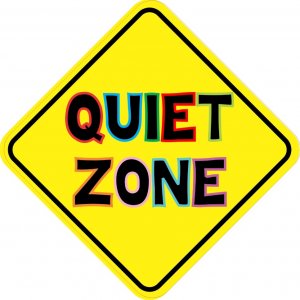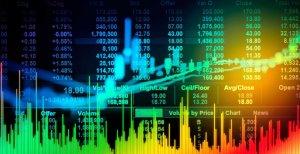In finance, a «dark pool» is a private market used by its participants to trade in different types of securities. They are basically parallel markets operating outside the most well-known regular markets. Liquidity in these markets is called «dark pool liquidity» (sorry I did not find a suitable translation for the term).
The bulk of dark pool transactions represent high-volume transactions conducted by financial institutions, such as those executed outside public markets such as the New York Stock Exchange and NASDAQ, so that they remain confidential and beyond the reach of the general public investor. The fragmentation of financial trading sites and electronic trading has allowed dark pools to be created and they can normally be accessed through cross-network or directly between market participants through private contractual arrangements. Some dark pools can be accessible to the public and can be accessed through retail brokers.
The main advantage for institutional investors in the use of dark pools is that they allow sellers to sell or buy very large volumes of stocks without showing their position to others, which avoids the impact on the market as neither the size of the transaction nor the identity is revealed until the transaction is executed. But, this means that some market participants are at a disadvantage, as they cannot see the transactions before it is executed; prices are agreed by dark pool participants, so the market is no longer transparent.
There are mainly three types of dark pools:
Independent undertakings established to provide a single differentiated basis for trading with different assets.
The dark pools are owned by a broker where the broker’s clients interact, most commonly with other broker clients (and possibly even with operators working for the company itself) under conditions of anonymity.
Some public markets set up their own dark pools to offer their customers the benefits of anonymity and non-deployment of orders in conjunction with a stock market «infrastructure».
Depending on the exact way a dark pool operates and interacts with other places, it can be considered and in fact, referred to as a «gray pool».
Dark pools have become increasingly relevant since 2007, with dozens of different parallel markets representing a substantial portion of US stock trading, a trend we will surely see in other countries as well. There are several types of dark pools and these can be run in multiple ways, including automatically, throughout the day, or at scheduled times.
Origin of Dark Pools
With the advent of supercomputers that are able to execute programs created by algorithms in a matter of milliseconds, high-frequency trading (HFT) is already dominating the daily volume of trading in many markets. For example, in the stock market HFT technology allows institutional traders to execute their multi-million dollar stock block orders ahead of other investors, taking advantage of fractional increases or falls in stock prices. When subsequent orders are executed, the benefits will be instantaneously earned by HFT traders who then close their positions. This way of legal piracy can be occurring dozens of times a day, producing huge profits for HFT traders.
Eventually, the HFT became an increasingly widespread practice in the markets, to the point that it became increasingly difficult to execute large operations through a single exchange. Because HFT’s large orders had to be spread across multiple markets, this alerted competitors that they could get in front of the order and snatch the inventory, rising stock prices. All this happened in milliseconds after the initial order was placed.
To avoid transparency of public markets and ensure liquidity for high-volume operations, several investment banks established private markets, which became known as dark pools. For traders with large orders who cannot place on public stock exchanges, or who do not want to make their intentions known, dark pools provide a market of buyers and sellers with sufficient liquidity to execute the transaction. By 2016, there were more than 50 dark pools in operation in the United States alone, mainly run by investment banks.
How do Dark Pools Work?
Liquidity can be collected off the market in dark pools using FIX and APIs. Dark groups are actually very similar to standard markets with very similar order types, prioritization rules, and pricing rules. However, liquidity is not deliberately advertised – there is no market depth information. In addition, they prefer not to display and display transactions in any public data feed as standard markets, or if they are legally obliged to do so, they will do so with the greatest possible legal delay, all this to reduce the impact on the market of any transaction. Dark pools are often formed from order books of brokers and other sources of off-market liquidity. When comparing these markets, careful controls should be made as to how liquidity numbers were calculated: some count both sides of the transaction, or even count the liquidity that was placed but not taken.
Dark pools offer institutional investors many of the efficiencies associated with trading in the order books of traditional markets, but without showing their shares to others. These markets avoid this risk because neither the price nor the identity of the company they are trading are shown. Operations in dark pools are recorded as Over-The-Counter transactions. Therefore, detailed information on volumes and types of transactions is left to the network to inform customers if they wish and are contractually bound.
Dark pools allow large amounts of funds to be pooled and large volumes of securities moved without investors having to show what they are doing and what their intentions are. State-of-the-art e-commerce platforms and the total lack of human interaction have reduced the time scale in market movements. This increased responsiveness of an asset’s price to market pressures has made it increasingly difficult to move large volumes of securities without affecting price. Thus, these markets can protect investors from market participants who use HFT (high-frequency trading) in a predatory manner.
Dark Pools and Price Discovery
For an asset that can only be publicly traded, it is generally assumed that the standard pricing process ensures that at any time the price is quite “fair” or “right”. But, few assets are available in this category as most can be traded off the market without adding transaction information to a publicly accessible data source. As a proportion of the daily volume generated by the asset traded so secretly increases, the public price could be considered fair as long as certain limits are not exceeded. However, if public trading continues to decline as hidden trading increases, it could reach the point where the public price does not take into account all information about the asset (in particular, it does not take into account what is traded in a hidden manner) and therefore the public price could no longer be considered as «fair».
However, where dark pool transactions are incorporated into a post-transaction transparency regime, investors have access to this information as part of a consolidated list of transactions. This can help the discovery of prices.
Regulation of Dark Pools
Although considered legal, dark pools can operate with very little transparency. Those who have been able to denounce the HFT as an unfair advantage to other investors have also condemned zero transparency in dark pools since they can perfectly hide conflicts of interest. The Securities and Exchange Commission (SEC) in the United States has stepped up scrutiny of these markets for complaints related to front-side practices. Illegal running occurs when institutional traders place their order in front of a customer’s order to capitalize on the rise in stock prices. Dark pools advocates insist that they provide essential liquidity, allowing markets to operate more efficiently.
Some traders using a liquidity-based strategy consider that dark pool liquidity should be advertised to allow a more «fair» trading for all parties involved.






